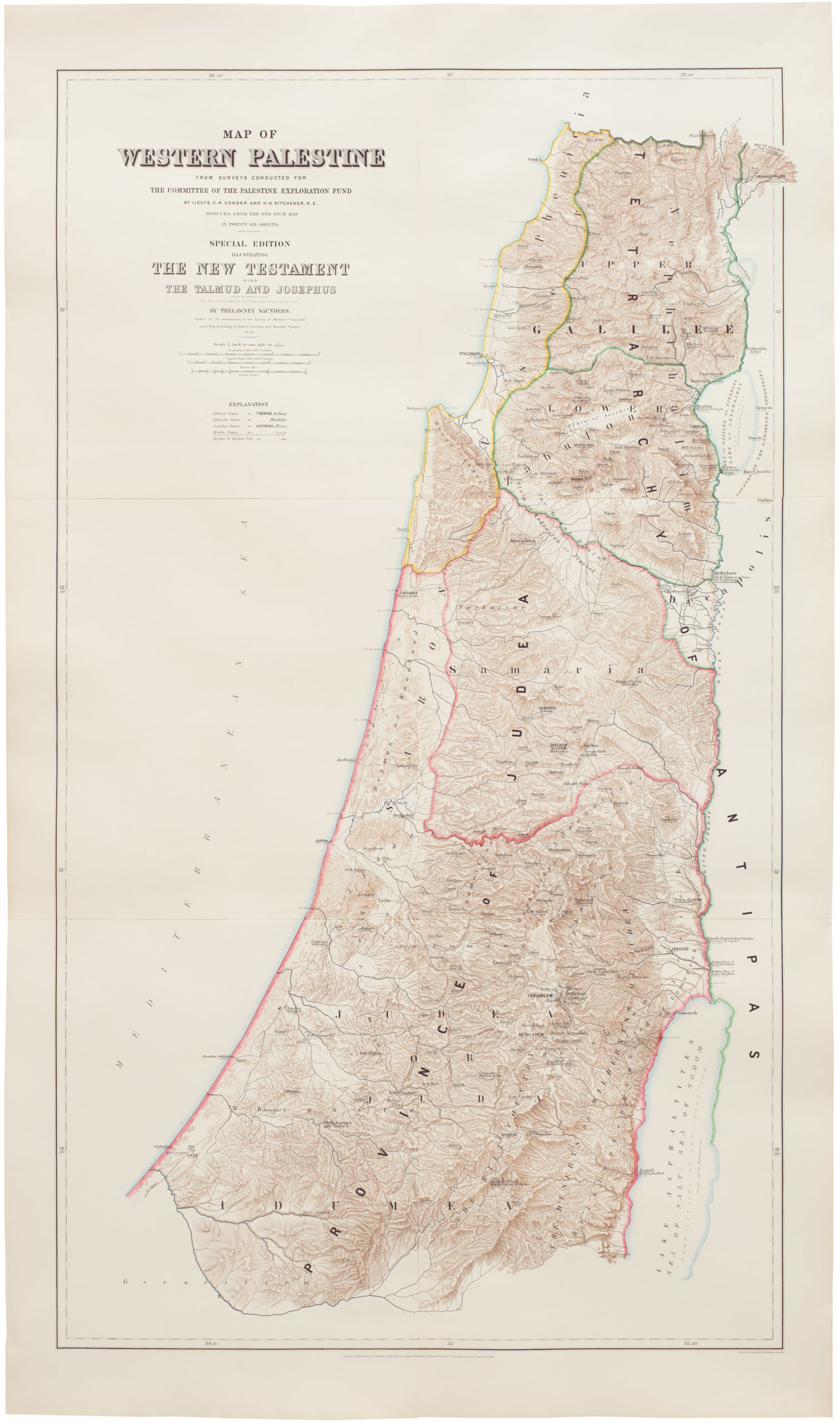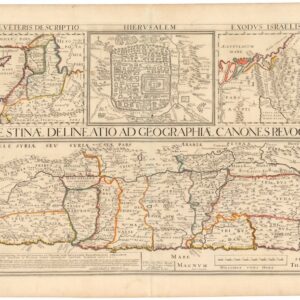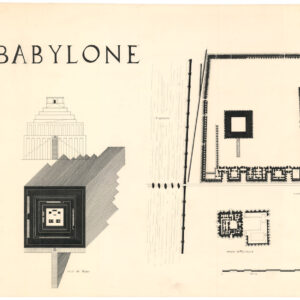An extremely rare 17th-century religious engraving with a view of Jerusalem.
[Unusual Jerusalem engraving / proof]
$2,200
1 in stock
Description
Quite likely the only surviving example.
From time to time, we encounter works that, despite our best efforts, resist definitive identification. Such is the case with this fascinating 17th-century engraved view of Jerusalem. The sheet, which survives in excellent condition, appears to have been designed for inclusion in a larger publication. However, the absence of editorial data, institutional records, or market parallels makes it impossible to determine the intended work or its creator with certainty.
A somewhat schematic bird’s-eye view of the fortified ancient city of Jerusalem dominates the center of the composition. Among the recognizable landmarks are the large enclosure of the Temple Mount (Haram al-Sharif) and the Roman amphitheater below it. Mount Zion, with the palaces of David and Solomon, appears as a small walled cluster near the bottom of the scene. Outside the city walls, crosses mark the site of Golgotha—the locus of the Crucifixion.
Above the city view is a large circular panel depicting the crucified Christ, flanked by the Virgin Mary and Mary Magdalene. Hovering above this scene, God the Father looks down with open hands, offering a gesture of blessing. The triangular halo symbolizes the Trinity, and his presence completes the Trinitarian theme, complemented by the dove of the Holy Spirit and the Son depicted in the panel below.
The entire composition is framed by an elaborate architectural border in the ornate Baroque style typical of the period. At the base, a large blank cartouche—meant to hold editorial information—is held by two monks. Above, two additional monks support the circular panel of Christ. While the monks serve as generic emblems of sacred authority and devotion, the frame’s four corners include identifiable saints: at the top, St. Bernardino of Siena (left) and St. Francis of Assisi (right); at the bottom, St. Bonaventure (left) and St. Anthony of Padua (right), each flanking a second pair of empty cartouches intended for annotation.
Census
We have not been able to identify the publication for which this engraving was intended. Indeed, we do not even know if that publication ever came to fruition, or who was behind it. From our extensive descriptive and pictorial searches, we have found no parallels or bibliographic references, allowing us to conclude that this view is very rare.
Cartographer(s):
Condition Description
Excellent.
References




![[Persuasive Cartography] Die Araber, Israel und die Supermächte.](https://neatlinemaps.com/wp-content/uploads/2025/10/NL-02133_thumbnail-300x300.jpg)